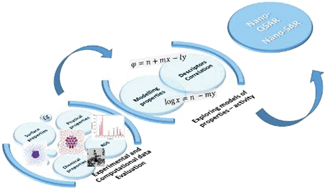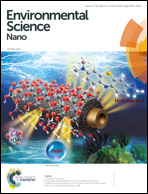Toward computational and experimental characterisation for risk assessment of metal oxide nanoparticles
Abstract
Metal oxide (MeO) nanoparticles (NPs) have become common in our everyday life over the past years. However, there is still an important knowledge gap regarding their toxicological effect and, in particular, how the different physical and chemical properties of MeO NPs influence their cytotoxicity and the subsequent implications for risk assessment. This work analyses the physicochemical properties of MeO NPs that have been reported as relevant for risk assessment and the experimental and theoretical methods used to obtain them. The surface, physical and chemical properties of NPs have been critically revisited to shed light on the features that can cause toxicity. Due to the large number of existing MeO NPs, in silico studies are necessary to get a good understanding of the NPs' physicochemical properties; therefore this review focuses on the state of the art computational methods used to model MeO NP toxicity: QSAR and QSTR models and their alternative approaches provide a better understanding of MeO NP biological toxicity in organisms.



 Please wait while we load your content...
Please wait while we load your content...